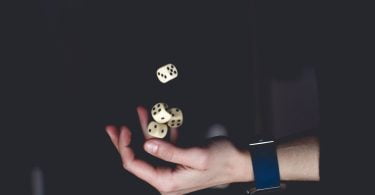Some of the earliest games played by humankind revolved around logic. For example, Go, which is still played around the world today, is a highly complex board game that evolved in around 2300 BCE. At the time, Chinese nobility played the game to help develop the mind’s critical thinking skills.
Today, it’s a hobby on par with any other board or card game despite being over four thousand years old (and despite the rise of digital games). In the meantime, humans have devised other ways to stay occupied while challenging the mind—many of which involve mathematics and, by extension, probability.
In a game, probability is simply the likelihood of a given outcome occurring. Based on a ratio of the likely outcome, which is based on previous outcomes and numerical data, probability informs a player of what will (probably) happen next. It might sound abstract, but probability is at the core of these hobbies and a critical part of what makes them fun for players.
Poker & Blackjack
At the heart of modern casino gaming is probability—and especially for card games like poker and blackjack. Savvy players regularly rely on probabilities to help inform their next moves; these probabilities are determined by the movement of cards in a 52-card deck and, typically, a multi-shoe game. That means there can be up to 416 cards in the mix.
For poker players, there’s even more mental math to do, as they must also predict their opponent’s hands. And there’s a different way for each variety of poker to rank hands, which adds a whole new set of information to weigh up. Depending on high or low rankings, the game changes quite a bit.
Deal or No Deal
Not many people realize that game shows rely on a probability scheme much like casino games, involving both chance and skill. In Deal or No Deal, contestants enter the game with an outright chance of 1/22 of picking a prize straight from the start, and a 5/22 chance of picking the biggest prize of £250,000.
In recent years, nailing the probability behind game shows has become a pastime for some. And for some Deal or No Deal fans, breaking down that probability goes beyond forecasting the chances of an outright big win. (Hint: it involves Noel Edmond’s beard.)
However, the earliest game shows ever televised (including the original Let’s Make a Deal from the 1960s) quickly became a hot topic for maths professors. This led to the creation of the ‘Monty Hall Dilemma’, named after the show’s host. The dilemma covers the intersection of math and chance and has become one of the most intriguing probability puzzles of the modern era.
Yahtzee
The game of Yahtzee is simple: players roll five dice up to three times in order to rack up the best score. Sounds simple? Given the number of dice and the number of rolls (which make for 252 possible outcomes), things in Yahtzee can quickly get hairy.
For example, the grand total of successful rolls would put a player’s final score around 1575, including bonus points… but most players who attempt to roll Yahtzee each turn end up with 171 points on average. Here’s how the probability pans out: players have a 99% chance of reaching over 150 total points, but only a 1% chance of landing over 500.
Rock, Paper, Scissors
The probability of winning rock, paper, scissors isn’t hard to devise: players have a 1/3 chance of winning. But this schoolyard game is a lot more complex than many people think. After all, there’s a human element at play here, which compels each player to either switch up their next move or stay the same.
One study conducted at Zhejiang University found that players were more likely to change their move if they had lost the previous round. Meanwhile, winners were more likely to keep their move. The study hinted that players should attempt to remain unpredictable in order to win, a la the Nash Equilibrium.









